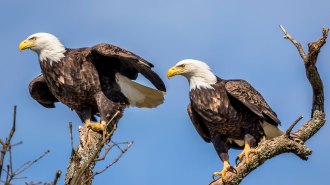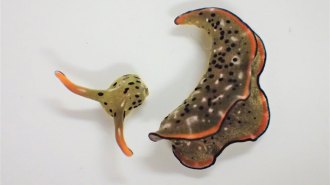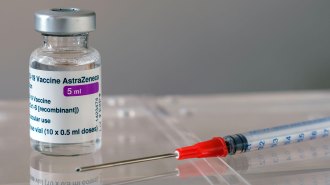Search Results
Modeling molecules in alien rain
Students will compare and contrast rain on Earth with rain on other planets and practice drawing molecular structures of various rain substances to examine the substances' physical and chemical properties. Students will use that information, along with the planetary conditions needed to form rain, to create a short weather forecast for one planet.
- Exercise type:Activity
- Topic:Health & Medicine
- Category:Coronavirus
- Category:Data Analysis
- Category:Diversity in STEM
A fair shot
Students will analyze a graph to identify inequities in COVID-19 vaccine access among nations based on wealth, discuss how affluence affects access to and distribution of vaccines as well as how disparities in vaccine distribution affect global pandemic recovery. Students will then work in groups to research COVID-19 vaccine access and distribution in their state or local area, identify potential inequities in vaccine access and distribution and construct a graph of their own.

Elusive Killer in Eagle Die-Offs ID’d
In this guide, students will learn about scientists’ quest to solve mysterious bird deaths, discuss how invasive species affect ecosystems and research an invasive species in their region.
Investigating invasive species
Students will define invasive species and discuss how certain species affect ecosystems and human society. Then, students will research invasive species in their region and devise an invasiveness rating scale.
Science mystery solvers
Students will answer questions about the online Science News article “A toxin behind mysterious eagle die-offs may have finally been found,” which explores scientists’ quest to ID a suspect in mass bird deaths. A version of the story, “Elusive killer in eagle die-offs ID’d,” appears in the April 24, 2021 issue of Science News.
Get to know your local geology
Students will learn about plate tectonics, research the geologic and tectonic history of their region or state and analyze geologic maps to understand how plate tectonics shaped the landscape.

No Body Is No Problem for Detached Sea Slug Heads
In this guide, students will explore animal regeneration, discuss why scientists are interested in the process and use what they’ve learned to narrate a Science News video about regenerating sea slugs.
Speaking of science
Students will investigate animals that regenerate, discuss how energy plays a role in the process and think about why scientists might be interested in studying animal regeneration. Students will use what they’ve learned to write a script and narrate a Science News video of regenerating sea slugs.
Sluggish regeneration
Students will answer questions about the online Science News article “A sea slug’s detached head can crawl around and grow a whole new body,” which explores how some sea slugs regenerate. A version of the story, “No body is no problem for detached sea slug heads,” appears in the April 10, 2021 issue of Science News.
A century of science podcast
Using the Science News archive for reference, students will make a podcast detailing the developments in an area of science over the last century.

Vaccine Inequity Will Prolong Pandemic
In this guide, students will learn about challenges in vaccinating the world against COVID-19. Then, students will discuss the possible effects of varying vaccination rates on local and global scales.
Global problem solving gets personal
Students will think about how communities connect on local and global scales through the lens of COVID-19 vaccine distribution and consider why global collaboration in STEM is crucial for solving some large-scale issues.